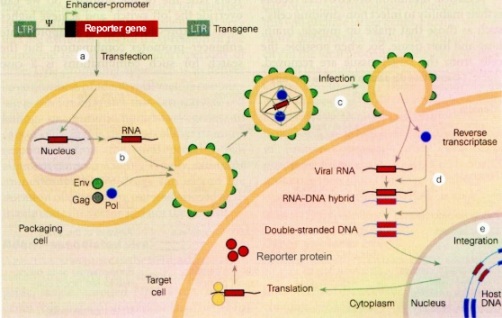Safer Retinal Gene Delivery System Developed
Researchers at Tufts University School of Medicine and the Sackler School of Graduate Biomedical Sciences at Tufts have developed a new tool for gene therapy that significantly increases gene delivery to cells in the retina compared to other carriers and DNA alone, according to a study published in the January issue of The Journal of Gene Medicine. The tool, a peptide called PEG-POD, provides a vehicle for therapeutic genes and may help researchers develop therapies for degenerative eye disorders such as retinitis pigmentosa and age-related macular degeneration.
"For the first time, we have demonstrated an efficient way to transfer DNA into cells without using a virus, currently the most common means of DNA delivery. Many non-viral vectors for gene therapy have been developed but few, if any, work in post-mitotic tissues such as the retina and brain. Identifying effective carriers like PEG-POD brings us closer to gene therapy to protect the retinal cells from degeneration," said senior author Rajendra Kumar-Singh, PhD, associate professor of ophthalmology and adjunct associate professor of neuroscience at Tufts University School of Medicine (TUSM) and member of the genetics; neuroscience; and cell, molecular, and developmental biology program faculties at the Sackler School of Graduate Biomedical Sciences at Tufts.
Safe and effective delivery of therapeutic genes has been a major obstacle in gene therapy research. Deactivated viruses have frequently been used, but concerns about the safety of this method have left scientists seeking new ways to get therapeutic genes into cells. _RDMag
More on the basic method
Gene delivery systems will allow for the re-programming of cells that have gone wrong, and for cells that were programmed wrong from the very beginning. In other words, gene therapies will be for all humans regardless of age.
The idea is to make human life longer, healthier, more fulfilling, and more relevant to the universe at large. The way to the next level.
Labels: gene therapy






